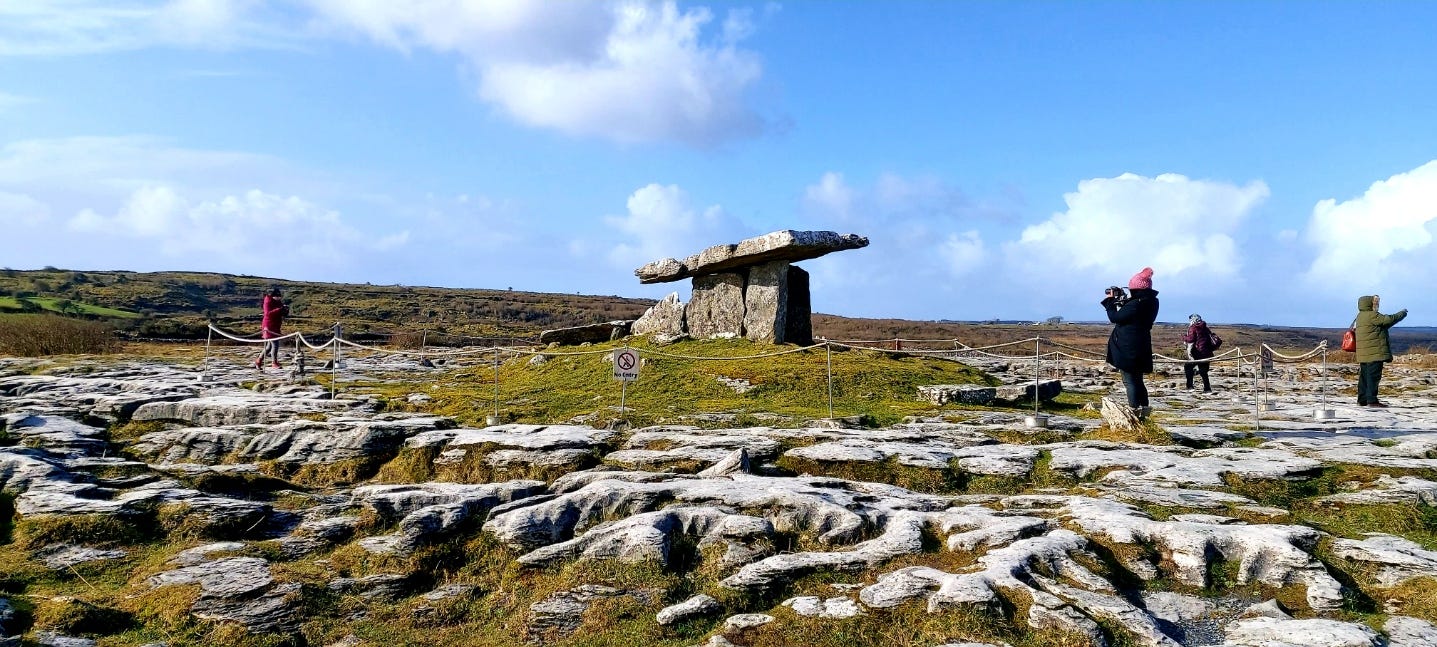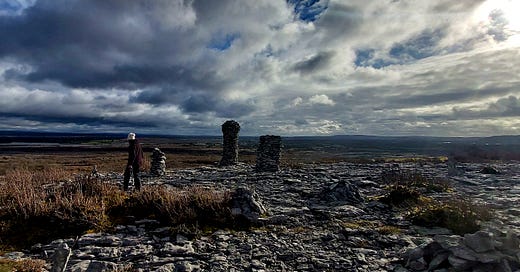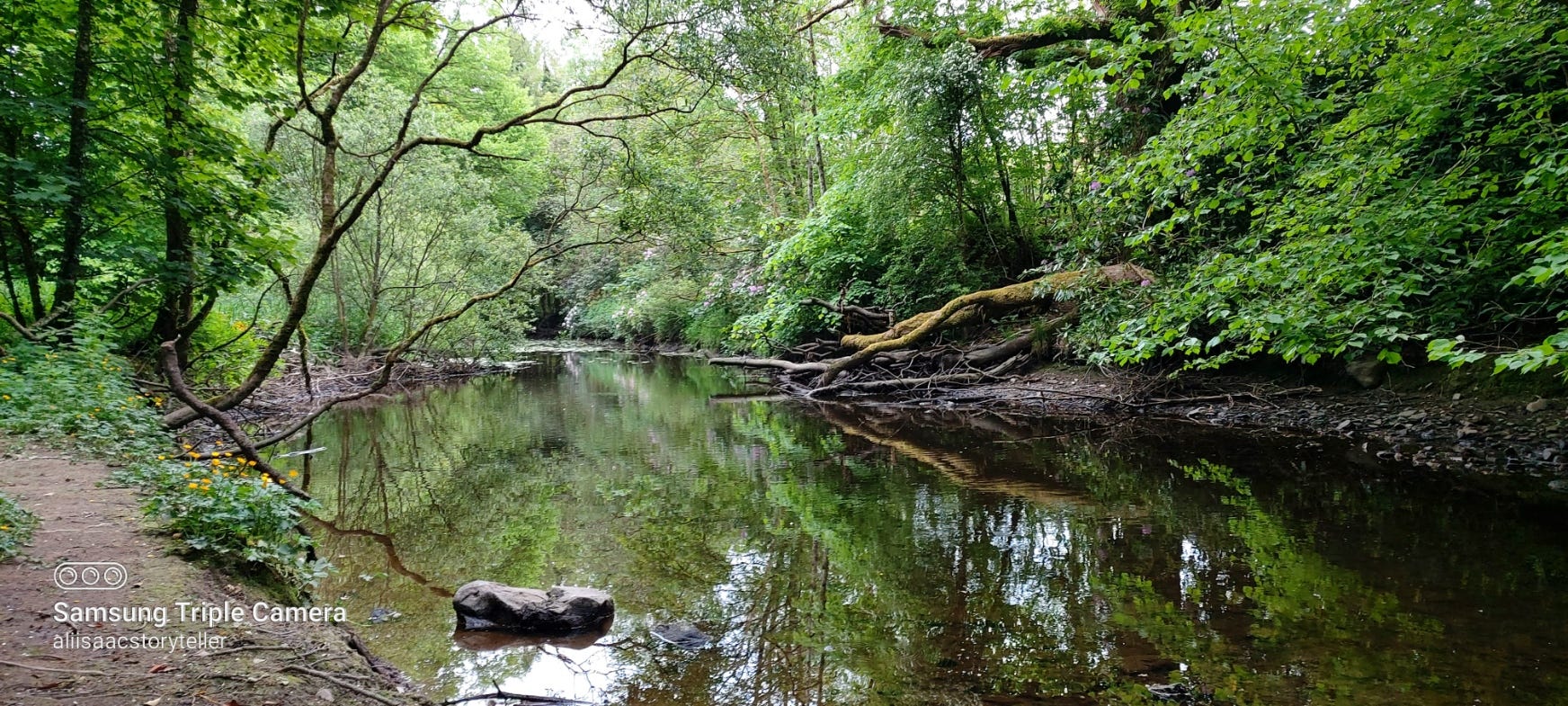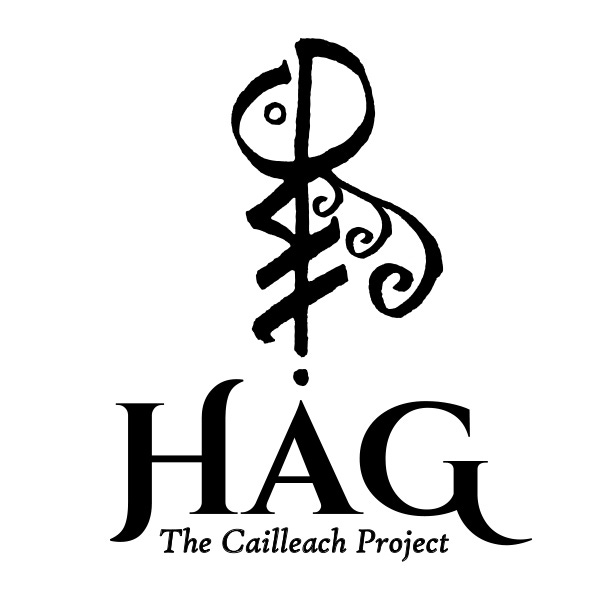[T]he hag deity known as the Cailleach takes human form at Samhain to rule the winter months, bringing in winds and wild weather. Her very steps change the land… she carries a hammer for forming valleys. A touch of her staff is enough to freeze the ground. [T]he Cailleach is thought to be the mother of the gods, the great cold originator of all things.”1
Katherine May - Wintering
What is the Cailleach Project?
THE CAILLEACH IS A LONELY FIGURE, often interpreted as an otherworldly hag, crone or witch, who does not inhabit the written mythology of Ireland that we have inherited from our early medieval writers. Unlike the characters of those stories, though, she has remained very much alive in the psyche and oral lore of Irish culture as the centuries progressed.
Despite the arrival of Christianity, the upheaval of invasion and British colonialism, the violence of linguistic imperialism, the devastation of famine and emigration, and the homogeneity of global capitalism and modernity, the Cailleach can still be found in the place-names and local legends of the Irish landscape. Which is fitting, given that it is she who was reputedly responsible for the formation of the land. She was also associated with winter. Manchán Magan, author of Thirty-Two Words for Field, describes her as:
“the personification of winter … her veil may have represented the land being clad in frost and snow. In Scotland and the North of Ireland her method for hastening winter was flying and beating back the summer vegetation with her cudgel … [s]he’d stir up strong winds or set the sea spewing by belting the sky and the earth. Her primary impetus wasn’t so much malevolence as a wish to agitate, to incite change - an awareness that things require an animating force.”2
He also goes on to write that “[t]here is often a certain sinister sense to the word [Cailleach] - of a black-clad, veiled, otherworldly figure”, whom he believes was “demonised by the patriarchy”. He suggests that by taking the veil, she submitted to the new order of Christianity, thus losing her power. However, her stories persisted, representing society’s “innate desire to return to the days of paganism and an awareness of the loss we’ve suffered in culture and wisdom and in alienation from nature.”
Regardless, in Ireland and Scotland the legends of the Cailleach have endured. She is interpreted not just as the creator of landscape and controller of winter, but also as as the figuring of the wise-woman healer/ witch. She has arcane knowledge which she is capable of using for good and ill.
Here at H A G, we will in due course encounter the Cailleach in all her guises and come to know her by all her many names. We will examine her relevance to our post-modern, global, capitalist lives, and what we can learn from her. But she is just one of a host of women, mythological, historical, and present in the here-and-now, who will be featuring on these pages.
For me, the Cailleach Project is a journey in which I am reconnecting with past knowledge and wisdoms, such as they remain. I have learned that there is a vast network of people out there already active in this field, and I will introduce you to those whom have inspired me.
But it is also a deeply personal process, in which I share my own discoveries, fight my demons, and learn to live in, and celebrate, this aging body I have over the years become so disconnected from. I invite you to join me in your own Cailleach Project; as I have come to realise, the personal is political; sharing our personal stories can have such a powerful impact, and we can all learn from each other, so I invite you to add your stories in the comments as we move through this adventure together.
You are receiving this newsletter because in the past you subscribed to my website, aliisaacstoryteller. If you no longer wish to receive these newsletters, you will find the unsubscribe button at the bottom of the post, but I will be sorry to see you go. Thank you for supporting aliisaacstoryteller and H A G.
1.
“She is the Cailleach, the old one, the hag, the witch, the rock-faced crone, the giantess of vast years and even vaster power. The hag flourished so long ago that we know nothing of her people: not their date of arrival in Ireland, not their race, continent of origin, language or religion”
Patricia Monaghan, author and Professor of Interdisciplinary Studies
Although the legend of the Cailleach in Ireland seems to go back to a pre-Celtic era, as Patricia Monaghan infers here3, by the very nature of its oral tradition there is no concrete evidence to confirm it; academics are therefore generally of the opinion that the Cailleach is an early modern fictional invention. The authors of early Irish literature were Christian monks; perhaps the idea of a female deity so powerful she could create/ destroy landscapes and control the weather was a blasphemy they could not countenance. Gearód Ó Crualaoich suggests that even though the Cailleach figure was discredited by patriarchal and Christian society, “vernacular culture and vernacular cosmology retained a more valued and centred sense of the otherworld female that not only endured but actively informed cultural developments - artistic, political and ritual - in the course of the early modern era”;4 he doesn’t give examples though, unfortunately.
The early modern period was a time of witch-hunt fervour in Europe; in her book, Caliban and the Witch, Sylvia Federici states that the witch-hunt was an attack on “women's resistance to the spread of capitalist relations and the power that women had gained by virtue of their sexuality, their control over reproduction, and their ability to heal”. Any older woman, particularly if she lived alone, or practised herbal remedies, or carried out midwifery services to the women of her community, risked accusations of witchcraft. It is hard to imagine that in the grip of such volatile and violent fearmongering and oppression, stories of the otherworld female were circulating freely in vernacular culture.
2.
“This is a female text”
Doirrean ní Ghríofa, poet and essayist
This is a female text,5 yes; it is about women, written by a woman, about the female experience, and the female beings who were traditionally written out of history by male writers. It is written for women, but not exclusively. Men are welcome here. This is not a newsletter about Irish myth, or history, or motherhood, or feminism, or landscape, or seasons; it is all of the above and the myriad ways these topics intersect. This newsletter is not about narrowing down but about opening up. Menopause is not a dirty word to be whispered in secret. Women who are entering their H A G years, approaching the winter of their life span or their second spring, will no longer tolerate being made invisible, inconsequential. No matter your age, gender, or race, you are welcome.
3.
“[F]emale subjectivity as it gives itself up to intuition becomes a problem with respect to a … conception of time … as project, teleology, linear and prospective unfolding; time as departure, progression, and arrival-in other words, the time of history”
Julia Kristeva , philosopher, psychoanalyst, and writer. (womens time p17)
Julia Kristeva was criticised by feminists for suggesting that women are excluded from chronological linear history, “labelled masculine” , due to the inevitable and inescapable “cycles, gestation” and “biological rhythm” of their sex.6 I consider myself a feminist, and equal to men, yet that does not require me to deny my female being.
My bodily experience of female being is in agreement with Kristeva’s assessment; from the onset of puberty I entered into biological cycles. In rhythm with lunar phases, my body gave way to thirteen bleeds each year; I dropped out of linear time on three occasions as my body grew round with child, gave birth, and then nurtured. It was difficult to realign with reality afterwards.
My body cycled through its trifold manifestations: maid - mother - crone. Spring - summer - winter. Learning - experience - wisdom. As Brigid relinquishes her grip on summer, the Cailleach enters her season.
4.
“In some versions of the mythology, the Cailleach and Brighde [Brigid] are two faces of the same goddess; youth and vitality for summer, age and wisdom for winter”
Katherine May, author
In Irish mythology, there are stories of the triune goddess; the Mórrígan, for example was made up of three sisters named Badb, Macha/ Nemhain, and Anand. Ériu, Banba, and Fódla were the triple goddesses of sovereignty. Brigid was also a triune goddess; in her case, all three sisters were named Brigid but were distinct by their role, or skill: at the forge, as healer, as poet.
The Cailleach does not fit this pattern; the other goddesses were all of the race of Tuatha de Danann, but she is not. Interestingly, though, she has multiple identities depending on the region she is associated with: at Loughcrew, she is Garavogue or Vera; in Cork she is An Cailleach Bhéara, or Digde; in Armagh she is Milucra; in Donegal she is Biróg; at Knowth she is Buí, at Moybologue she is Geargain, and so on.
To me this suggests not a single deity, but either multiple local goddesses, or individual human women who acted as healers or mystics in their communities, whose reputations assumed magical powers and goddess-like qualities. Biddy Early (1798 – 1872), known as the Wise-Woman of Clare, would be a famous example of such a figure. Disliked by the church, she was accused of witchcraft in 1865, although no one would testify against her.
5.
“[T]he figure of [the Cailleach] undergoes transformation into that of the sovereignty queen and suffers stigmatisation and displacement in the course of the development of the specifically patriarchal and Christian cultural world of the later Irish middle ages”
Gearód Ó Crualaoich, Author and Professor of Folklore and Ethnology
The power of the Cailleach was diminished by the patriarchy and the church. When she accepted the veil from Saint Cummine, she confined herself to the ascetic life of a nun. Many rock formations along the coast are said to be her fossilised remains as she sat looking out to sea, waiting to be rescued by her husband, the sea-god, Manannán. The patriarchy and the church treated her legend no differently to how they treated all women, and we are still fighting the consequences of that today. Freedoms so hard won have been so easily wrested from us in recent years, the right to abortion and women’s healthcare in the US, for example.
It is curious that a female figure so powerful as to create landscapes and replace summer with winter would submit to a saint in such a docile manner. Nevertheless, her stories have persisted right up until the present day, and even when demonised, she remains an enigmatic character full of vigour and strength who still holds sway over the land and oral culture of Ireland.

What the Cailleach means to me
It is far from clear whether the stories of the Cailleach have come to us from the pre-Celtic past or the superstitious vernacular culture of the early modern period. The myths we inherit are the attempts of peoples past to explain some kind of truth about their world, and thus were designed to teach.
As Ó Crualaoich points out, the characters portrayed in these tales are “presented to us as fictional constructs who, more or less, resemble the flesh-and-blood humans of our experience of life even though, in some cases, they are clearly creatures deriving, in whole or in part, from the otherworld”.
But can they relate to us today? Science has surely debunked the ‘truths’ that came to us from superstition and religion. We know today that the world was not created in six days allowing us a day of rest on the seventh, as the Christian world-view would have us believe. And yet followers of Christianity still have faith. That is because religious teaching, in general, shows us better ways to live and be, and lets face it, takes away our fear of death.
However, the way we live in the post-modern period has removed us from the natural world. We are consumers living in an age of industrialisation based on extraction and plunder of our planet’s resources. Our ancestors, of whatever faith they followed, moved more gently upon the earth, lived, produced and consumed within its natural cycles and rhythms. Ó Crualaoich reminds us that “[o]ur lifestyle and our cultural life as a whole … always start from and continue to be grounded in our physical existence in the ‘natural’ world”. The legend of the Cailleach reminds us that the natural world has its own cycles and rhythms of which we are part.
In addition, Ó Crualaoich suggests that the tradition of the otherworldly Cailleach and the wise-woman offers “a therapeutic function that is intriguingly modern” and thus provides “serviceable coping mechanisms - of a ritual and psychotherapeutic sort - at times of individual and group affliction”. I imagine that in the turbulent times of early modern Ireland’s history, such ‘therapy’ was much sought after, particularly in rural or poor sections of society, who experienced little, if any control over or input to real and often traumatic events. Real women in the community, such as the bean-fheasa (wise-woman/ healer) or bean-chaointe (keening woman) invoked for their community, whether intentionally or not, a “manifestation of mythological meanings and values … in service of emotional well-being”, perhaps assuming in their community’s imagination, the persona of the Cailleach herself.
I have always felt the ebb and flow of natural bodily rhythms, and felt comfortable to succumb to them, even as I did not feel comfortable in my body. Life external to my body, though, was busy, and exercised its own push-and-pull over my attention. It is only in recent years, as my body has prepared itself for its H A G years, that I have begun to question my way of being, my female being.
Whatever her origin, I enjoy the stories of the Cailleach. I find meaning and learning in them. I like the idea of the wise-woman. I am drawn to food and plants not just as nutrition but as medicine. This interest has been happening and growing in me for at least the last five years, but it was only during the lockdown years that I found the time and space to embrace it.
I have sought knowledge in many different ways. I love research and have spent many happy hours wandering where such ‘rabbit holes’ have led me. When I turned fifty, I went to college and studied for a Bachelor’s in English literature and History. In 2022, I obtained a Master’s in English Literature. My brief years in academia were some of the most challenging and rewarding of my life, but the more I learn the more I realise how little I know.
In Irish mythology, Echtra Cormaic i Tir Tairngiri (Cormac’s Adventure in the Land of Promise), the Otherworld contains within it the Well of Knowledge from which five streams of learning flow. These five streams represent the five senses (sight, smell, taste, touch, hearing) through which knowledge is obtained. As infants and children, we use all our senses to gather information about the world we inhabit, but learning is soon restricted to what we read in books, which involves only our sight, and some degree of touch.
I love the idea of awakening my body and employing all my senses in the continuation of my educational journey. There is a proverb which famously declares that we never stop learning, and I believe that is true, or should be. The moment human beings decide they know everything they need to know begins the pivotal moment of decline. For me, looking back is the means to looking forward. By that, I mean rediscovery; of my body, my identity, of myth, legend and history, of the lost lore which was once common knowledge that we can never fully regain but which we also cannot ignore. Knowledge is empowerment.
What can you expect from the Cailleach Project?
At the beginning of each month, I will write about the current lesson I am focussed on, and the female being who has inspired me. She may be a goddess, a character from literature, a woman from the historical record, or a real live person who I may or may not know personally, but she will always have a connection to Ireland.
I reiterate that this is my personal journey as I move into my H A G years. It may or may not resonate with your own experience. It will not be a how-to guide to successfully navigating menopause. I am not an expert or guru on anything, just a flawed female being struggling to sail the waters of my own life.
But I have found so much pleasure and fulfilment in seeking out women who are documenting their own adventure into the winter of their lives (mostly on Insta, but also amongst certain friends I feel closest to). It feels like community. It is supportive and encouraging.
If you are struggling with the transition into this phase of womanhood, know that you are not alone. There is so much information available on puberty and motherhood, but a void when it comes to menopause and female aging. All that is changing, though. There is a slow swell, a movement towards reinventing female experience and patriarchal attitudes. Not just amongst women; fathers want a better life for their daughters, husbands for their wives, brothers for their sisters, and sons for their mothers. It is a long slow gradual process, but I firmly believe in it. And so I would like to stress that men are welcome to the Cailleach Project too.
I hope the Cailleach Project empowers and encourages you to find your own educational and experiential path, and I encourage you to share your experiences and stories in the comments.
Additionally, I will be transferring my Irish mythology posts from aliisaacstoryteller to Substack where and when they are relevant. You may receive notification of this from time to time. One aspect of the Cailleach Project I am really looking forward to is the Chat function; this will be like having our own personal social media where we can chat, ask questions, share advice, share photos, and generally connect with each other. I believe subscribers will need to download the Substack app to access this function; I will keep you informed. It is likely that in the future some of the content I produce here will move to paid subscription, but I will keep you informed on that, too. I am also hoping to introduce some audio, perhaps even a podcast, but I will await for your feedback on this. And of course I will provide links to helpful resources, and snippets of history and archaeology news that you might find interesting.
If all or any of this is appeals to you, please consider subscribing to support my work.
May, Katherine. Wintering, Penguin Random House UK., 2020.
Magan, Manchán. Thirty-Two Words for Field, Gill Books, 2020.
Monaghan, Patricia. The Red-Haired Girl from the Bog, New World Library, 2003.
Ó Crualaoich, Gearóid. The Book of the Cailleach, Cork University Press, 2003.
Ní Ghríofa, Doirreann. A Ghost in the Throat, Tramp Press, 2021.








Dear Ali,
Great to see your work again! I've been reading your blog for quite some time, and we've occasionally encountered each other on Instagram I believe ... But I think SubStack seems to be a good new place for sharing and connecting, and I'm very excited to read about this excellent and timely project. May it be resplendent!
You know, I was reading blog posts of yours, among others, in 2019 when I went on a transformative retreat in Béara ... It has completely changed the direction of my life and work, gradually and then all at once. I was researching the Cailleach, and went on pilgrimage to Her Place there, on the headland ... It inspired poetry, stories, changes in career, moving house ... And you and your work were there with me. It was part of a shift in my life; it's how I feel men can engage with your work here, and the figure of the Cailleach more generally. I realised that I had so often looked to men as elders and mentors, but that my life and heart were moving me more towards asking for elder women to guide me, to advise me, to help me on my way. It's something that we do not practice enough: men must realise that they can look to a woman as an Elder, without casting here as a Mother or caretaker. No. We must look to her as wise, as powerful, as sovereign. It is only through her that we can fully become. I'm not sure if it's ... polite?... to post links in a comment here? But please let me know. I'd love to share with you and others a couple of little pieces of my journey with Her ... (can you ask me to delete the lunks if it's not okay? I'm totally happy to ...)
Blessings of the Returning Sun to you and yours, and to all of your readers!
https://thehollowbehindthehearthstone.com/cailleach-bheara-wise-woman/
https://thehollowbehindthehearthstone.com/a-page-from-the-leabhar-draiocht-pilgrimage-to-cloch-na-cailli-bheara-the-hag-stone-of-beara/
https://thehollowbehindthehearthstone.com/hypnagogia/
Great stuff! I subscribed and want to send along some support soon after I've transitioned back to work this winter. I wrote a novel titled Thief of Tales (written under the pseudonym SA O'Hungerdell) that might interest you, which relates to some of the main themes discussed in your site, and includes a revisitation of The Hag of Beara. If you ever took a look at it I would love your feedback. Peace- Steve Harrington